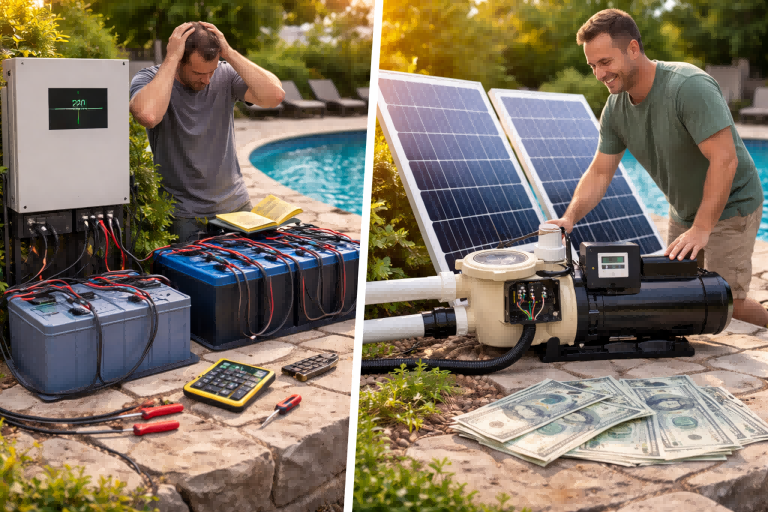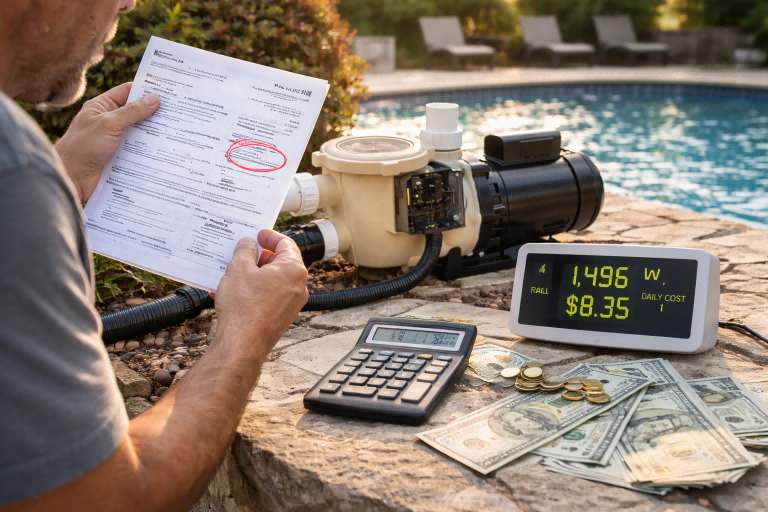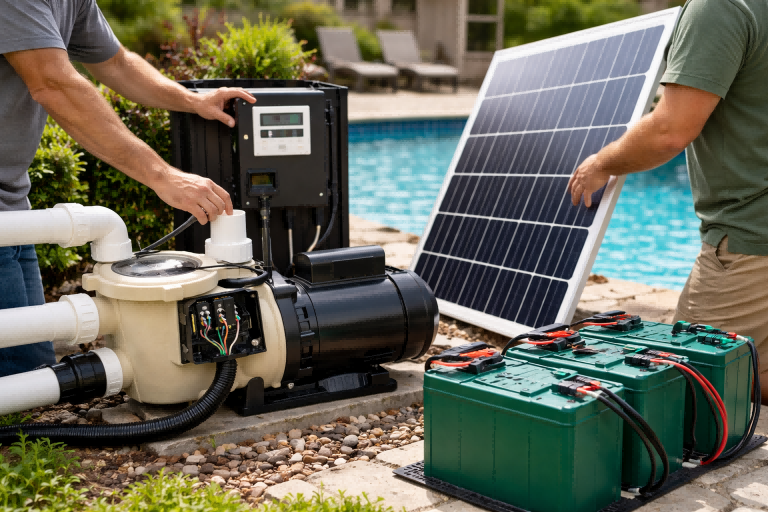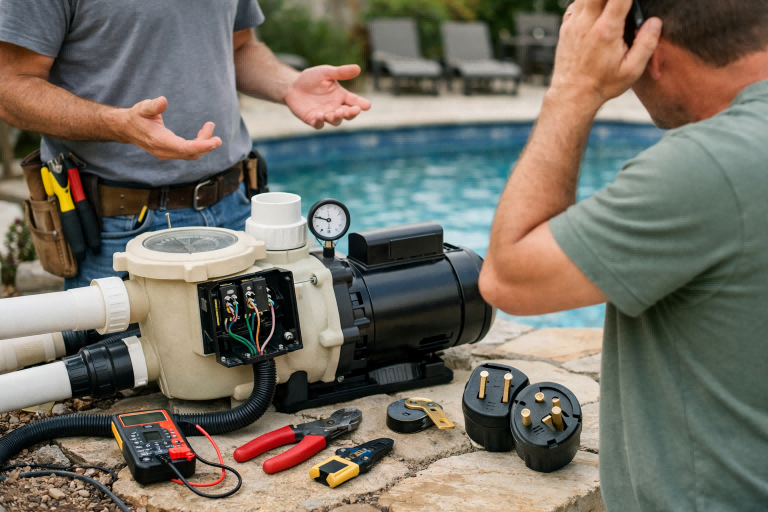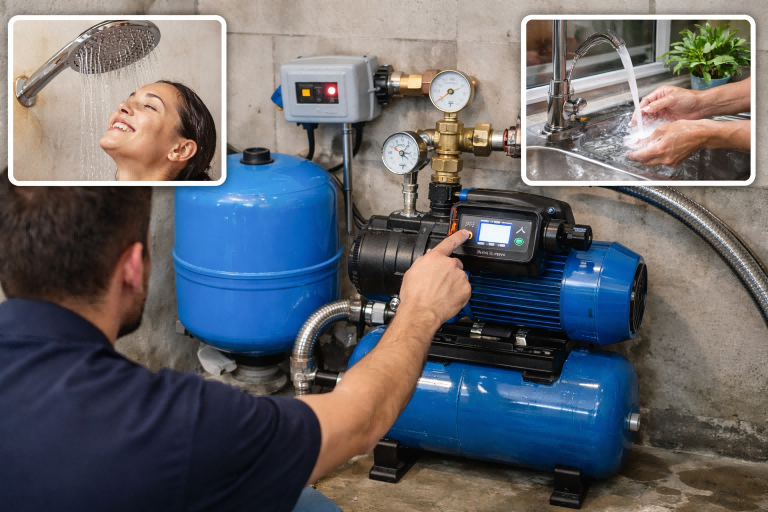Struggling to choose the right irrigation pump?
Picking the wrong size wastes money and energy.
It can also damage your crops and your equipment.
To size an irrigation pump, you must determine your required flow rate in Gallons Per Minute (GPM) and your Total Dynamic Head (TDH) in feet or meters. These two metrics are essential. They dictate the necessary horsepower (HP) and pump specifications for efficient and reliable water delivery.
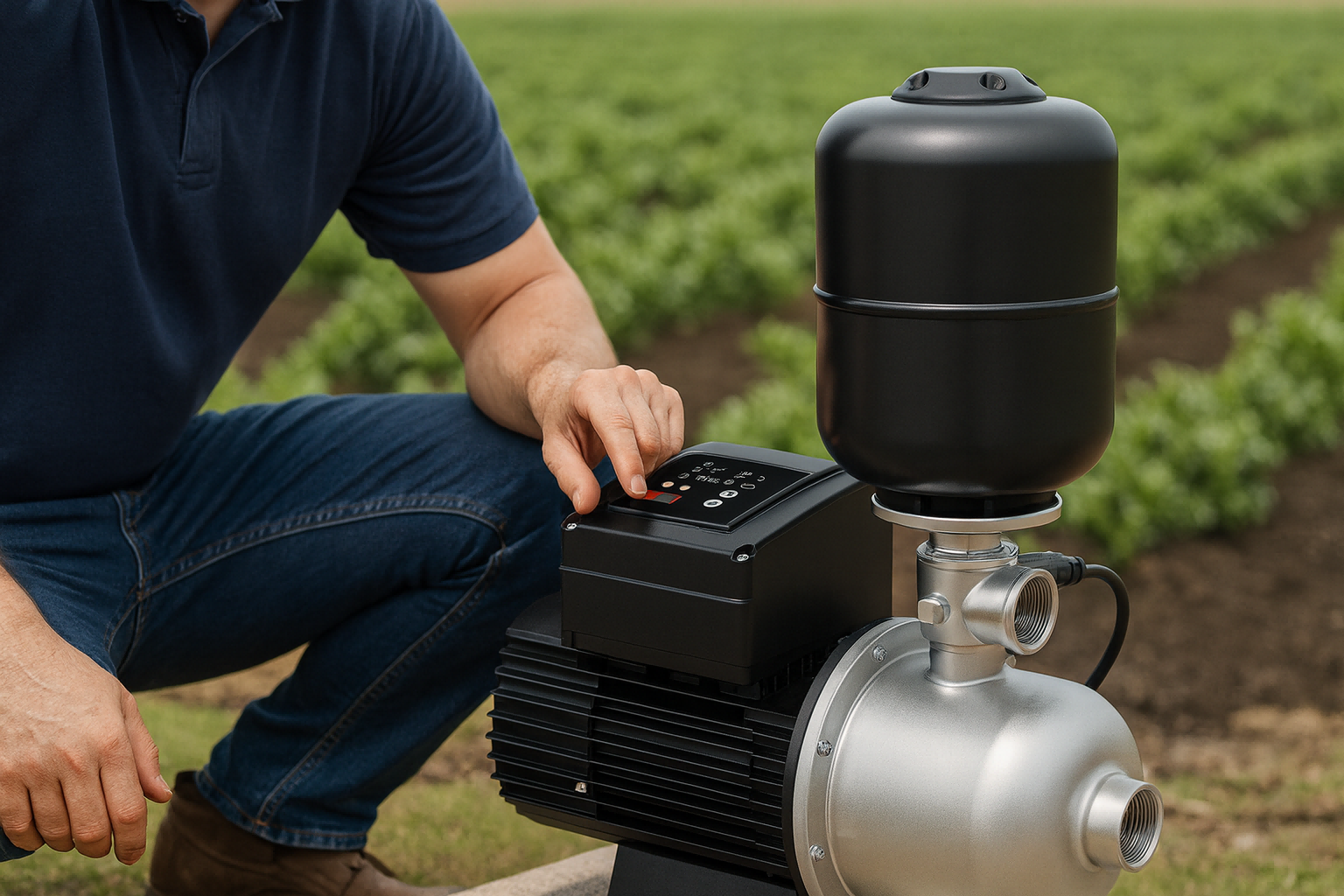
Choosing the right pump feels complex.
Many factors influence your decision.
However, breaking the process down makes it simple.
This guide provides a clear path to selecting the perfect pump.
Let's walk through the exact steps to ensure your system runs efficiently for years.
Understanding Your Water Source and Requirements
Is your water source limiting your irrigation plans?
A mismatched pump won't pull enough water, starving your system.
Let's ensure your source can meet your system's demands.
First, you must evaluate your water source's capacity. Whether it's a well, pond, or river, you need to know its reliable yield. This tells you the maximum amount of water you can pump without running the source dry, which is the foundation for all other calculations.
Understanding your water source is the first critical step.
An undersized source or an oversized pump leads to failure.
You need to know how much water you have available before you decide how much you can use.
Assess Your Water Source Type and Yield
The type of water source dictates how you measure its capacity.
Each source has unique characteristics to consider.
- Wells: Wells have a "safe yield" or "recovery rate." This is the maximum GPM you can pump continuously without the water level dropping too low. Your well driller's report should contain this information. Exceeding this rate can damage the well and the pump.
- Ponds and Lakes: The available volume is your primary concern. You must calculate the total usable volume and consider the seasonal recharge rate. Local regulations may also limit how much water you can draw.
- Rivers and Streams: Flow rate is the key metric here. You must measure the stream's flow in GPM or cubic feet per second (CFS). It's crucial to only use a fraction of the total flow to maintain the local ecosystem. Again, permits are often required.
Determine Water Quality
Water quality affects both your crops and your pump's lifespan.
Suspended solids like sand or silt can rapidly wear down pump impellers and casings.
High mineral content can lead to scale buildup in pipes and nozzles.
A water quality test can identify these issues.
It helps you choose a pump made from appropriate materials.
For example, water with abrasive particles might require a pump with hardened components.
| Water Quality Issue | Potential Impact on Pump System | Recommended Action |
|---|---|---|
| Sand, Silt, Debris | Accelerated wear on impellers, seals, and casings. Clogged nozzles. | Use a pump designed for solids handling. Install pre-filters or intake screens. |
| High Mineral Content | Scale buildup inside pump and pipes, reducing efficiency. Corrosion. | Select pumps with corrosion-resistant materials. Consider a water treatment system. |
| Acidity or Alkalinity (pH) | Corrosion of metallic components, leading to premature failure. | Choose pumps made of stainless steel or other pH-resistant materials. |
Map Your Irrigation Zones
You also need to understand where the water is going.
Map out your property and divide it into irrigation zones.
Each zone has specific water needs based on crop type, soil, and sprinkler heads.
Sizing a pump for the largest single zone is a common strategy.
This ensures you can adequately water every part of your property, even if not all at once.
This approach prevents you from buying a much larger and more expensive pump than necessary.
Calculating Total Dynamic Head (TDH)
Are you worried about getting enough pressure to your farthest sprinklers?
Low pressure means poor coverage and unhealthy plants.
Calculating Total Dynamic Head (TDH) guarantees your pump is powerful enough.
Total Dynamic Head (TDH) is the total equivalent height that water must be pumped, accounting for vertical lift, friction loss in pipes, and the final operating pressure. You calculate it by adding the static head, friction head, and pressure head together. This value is crucial for pump selection.
TDH might sound like a complex engineering term.
It is simply a measure of all the resistance your pump must overcome.
Getting this number right is not optional.
It is the only way to ensure water gets delivered where you need it, at the pressure you need.
Let's break down the three parts of the TDH equation.
Part 1: Static Head
Static head is the vertical distance you are moving the water.
It's the easiest part of the calculation.
It consists of two measurements.
- Static Lift Head: This is the vertical distance from the water's surface (like the water level in your well) up to the centerline of the pump. If the pump is submerged, this value is zero.
- Static Elevation Head: This is the vertical distance from the pump's centerline up to the highest point in your irrigation system. This could be the highest sprinkler head or the top of a hill.
Simply add these two numbers together to get your total static head.
For example, if your well water level is 50 feet below the pump and the highest sprinkler is 20 feet above the pump, your static head is 70 feet.
Part 2: Friction Head (Friction Loss)
Friction head represents the pressure lost as water moves through pipes and fittings.
Water rubbing against the inside of the pipes creates friction.
This friction slows the water down and reduces pressure.
Longer pipes and smaller pipe diameters create more friction.
Fittings like elbows, tees, and valves also add significant friction.
You can find friction loss values in charts provided by pipe manufacturers.
You need to know your pipe's material (PVC, steel), diameter, and the flow rate (GPM) to use these charts.
| Pipe Diameter (PVC Schedule 40) | Friction Loss per 100 feet at 50 GPM | Friction Loss per 100 feet at 100 GPM |
|---|---|---|
| 2 inch | 3.51 feet | 12.3 feet |
| 3 inch | 0.61 feet | 2.15 feet |
| 4 inch | 0.20 feet | 0.69 feet |
As you can see, a larger pipe dramatically reduces friction loss.
It's often wise to invest in larger diameter pipes to reduce the load on your pump and save energy.
Part 3: Pressure Head
Pressure head is the final pressure required at the sprinkler heads for them to operate correctly.
Every sprinkler, dripper, or nozzle has a recommended operating pressure, usually measured in Pounds per Square Inch (PSI).
You must convert this PSI value into feet of head to add it to your TDH calculation.
The conversion is simple.
1 PSI = 2.31 feet of head.
So, if your sprinklers require 40 PSI to work, your pressure head is 40 * 2.31 = 92.4 feet.
Putting It All Together
The final TDH formula is:
Total Dynamic Head (TDH) = Static Head + Friction Head + Pressure Head
Let's use an example.
- Static Head = 70 feet
- Friction Head (for the entire system) = 25 feet
- Pressure Head (for 40 PSI sprinklers) = 92.4 feet
TDH = 70 + 25 + 92.4 = 187.4 feet
Your pump must be able to deliver your desired flow rate at a TDH of 187.4 feet.
Determining the Required Flow Rate (GPM)
Do you know how much water your crops actually need?
Guessing your flow rate leads to overwatering or underwatering.
Let's accurately determine the Gallons Per Minute (GPM) your system demands.
To determine your required flow rate, calculate the total water needed for your largest irrigation zone based on the number and type of sprinklers or emitters. Add up the individual GPM requirements of each sprinkler in that zone to find your total system GPM.
After calculating TDH, flow rate is the second critical piece of the puzzle.
It defines the volume of water your pump needs to move per minute.
An incorrect GPM calculation will make your entire system inefficient.
It can lead to dry spots, runoff, and wasted water.
We will look at how to calculate this for different irrigation methods.
Sprinkler System Flow Rate
For systems using sprinkler heads, the process is straightforward.
Each sprinkler model has a specific GPM rating.
This rating often depends on the nozzle size and the operating pressure.
Manufacturers provide performance charts for their products.
Find the GPM for your chosen sprinkler model at your target operating pressure (the PSI you used for the TDH calculation).
Then, count the number of sprinklers in the largest zone you plan to run simultaneously.
The formula is simple.
Total GPM = (GPM per sprinkler) x (Number of sprinklers in one zone)
For instance, if you have 20 sprinklers in a zone and each uses 2.5 GPM:
*Total GPM = 2.5 GPM/sprinkler 20 sprinklers = 50 GPM**
Your pump must be able to provide 50 GPM.
Drip Irrigation Flow Rate
Drip irrigation is measured differently, often in Gallons Per Hour (GPH).
Emitters in a drip system have very low flow rates.
First, find the GPH rating for your emitters.
Then, count the total number of emitters in your largest irrigation zone.
Calculate the total GPH for the zone.
Total GPH = (GPH per emitter) x (Number of emitters in one zone)
Since pump performance is measured in GPM, you must convert your total GPH to GPM.
Total GPM = Total GPH / 60
Crop and Soil Considerations
A more advanced approach considers the specific needs of your plants and soil.
This is known as the evapotranspiration (ET) rate.
ET is the amount of water lost from the soil surface and transpired by the plants.
It is measured in inches per day.
Local agricultural extension services can provide ET data for your region and crop type.
This method ensures you are replenishing exactly the amount of water your crops use.
It prevents waste and leads to healthier plants.
This calculation is more complex but provides a highly accurate water budget.
You would convert the required inches per day over your irrigated area into a total gallon requirement, then determine the GPM needed to deliver that volume within your desired watering window.
Understanding Pump Horsepower (HP) and Efficiency
Confused by pump horsepower ratings?
Choosing based on HP alone is a common and costly mistake.
A more powerful pump is not always a better pump.
Let's focus on efficiency.
Pump horsepower (HP) is a measure of the motor's power, but the pump's efficiency is more important. To find the right pump, use your calculated GPM and TDH to locate the Best Efficiency Point (BEP) on a pump performance curve. This ensures minimal energy use and maximum lifespan.
Once you have your required GPM and TDH, you can select a pump.
This is where you use a tool called a pump performance curve.
Every pump model has a unique curve provided by the manufacturer.
This chart is the key to matching a pump to your system's specific needs.
Ignoring the pump curve and buying based on horsepower is like buying a car without knowing its fuel economy or towing capacity.
How to Read a Pump Curve
A pump curve plots several key metrics.
- X-Axis (Horizontal): This shows the flow rate, usually in GPM.
- Y-Axis (Vertical): This shows the Total Dynamic Head (TDH) in feet or meters.
- Performance Line: This is a curved line that shows the relationship between flow and head. For any given flow rate, the pump will produce the corresponding head shown on the line.
- Efficiency Curves: These are typically shown as "iso-efficiency" lines or islands on the chart. They indicate how efficiently the pump operates at different points.
- Horsepower Lines: These lines show the actual horsepower being consumed by the pump at different operational points.
Finding Your Operating Point
To use the curve, you find your required flow rate (GPM) on the X-axis.
Then, you move vertically up to your calculated TDH on the Y-axis.
The point where these two values intersect is your system's "operating point."
The ideal pump is one where your operating point falls directly on its performance line, and as close as possible to its Best Efficiency Point (BEP).
The BEP is the spot on the curve where the pump converts the most electrical energy into water movement.
Operating at or near the BEP has huge benefits.
| Benefit of Operating at BEP | Explanation |
|---|---|
| Lower Energy Costs | The pump is working at its peak efficiency, using less electricity to move the same amount of water. |
| Longer Pump Life | At the BEP, the hydraulic forces inside the pump are balanced, reducing vibration, wear on bearings, and seal stress. |
| Quieter Operation | A pump running efficiently is a pump running smoothly. This reduces noise from vibration and water turbulence. |
| Increased Reliability | Reduced wear and tear means fewer breakdowns, less downtime, and lower maintenance costs over the pump's life. |
Why Horsepower Can Be Misleading
Two pumps can have the same horsepower but vastly different performance curves.
A 2 HP pump designed for high flow and low head will fail in a high head, low flow application.
Conversely, a 2 HP pump built for high pressure would be inefficient at moving large volumes of water at low pressure.
The horsepower rating only tells you the size of the motor.
The pump curve tells you what work the pump can actually do.
Always select a pump based on its curve, not just its horsepower.
The Benefits of VSD Pumps for Irrigation
Do your energy bills spike during watering season?
Traditional pumps run at one speed, wasting power when demand is low.
Variable Speed Drive (VSD) pumps offer a smarter, more efficient solution.
A an inverter booster pump, or VSD pump, automatically adjusts its motor speed to match the exact water demand in real-time. This maintains constant pressure, drastically cuts energy consumption by up to 50% or more, and extends the life of your entire irrigation system through soft-starting and reduced wear.
Traditional irrigation pumps operate on a simple on/off principle.
They run at 100% speed and power, regardless of the actual need.
This is like driving your car with only two options: a full stop or the accelerator pushed to the floor.
It's incredibly inefficient.
An inverter booster pump, also called a Variable Frequency Drive (VFD) pump, changes the game.
It provides a sophisticated and highly efficient alternative for modern irrigation.
How do Inverter Booster Pumps Work?
A VSD system uses an intelligent controller (the drive) to manage the pump's motor.
An integrated pressure sensor constantly monitors the pressure in the pipes.
If you are only watering a small zone, the system requires less flow to maintain pressure.
The VSD controller senses this and slows the pump motor down.
If a large zone turns on, the pressure will begin to drop.
The controller instantly detects this and speeds the motor up to meet the increased demand.
This ensures constant, stable pressure across your entire system, no matter how many sprinklers are running.
Key Advantages of VSD Technology
The benefits of using a VSD pump in an irrigation setup are significant, especially for B2B clients like importers and distributors whose customers demand quality and long-term value.
| Feature | Advantage for End-User | Selling Point for Distributor |
|---|---|---|
| Energy Savings | Reduces electricity bills by 30-50%+. The pump only uses the energy needed for the current task. | Strongest selling point. Offers a clear and calculable Return on Investment (ROI) for customers. |
| Constant Pressure | Perfect sprinkler performance. Even water distribution and healthier crops. | Solves common customer complaints about pressure drops and poor coverage. A premium feature. |
| Soft Start/Stop | Eliminates water hammer (damaging pressure spikes). Reduces mechanical stress on pipes, valves, and the pump itself. | Increases system longevity and reduces warranty claims. Positions product as high-quality and reliable. |
| Extended Pump Life | Less wear on bearings, seals, and motor windings due to lower average speed and reduced stress. | Lower total cost of ownership for the customer. Builds brand reputation for durability. |
| System Flexibility | Pump can efficiently operate across a wide range of flow rates. Ideal for systems with multiple, different-sized zones. | One pump model can suit a wider variety of applications, simplifying inventory for the distributor. |
Is a VSD Pump Right for Your Application?
VSD pumps provide the most value in systems with fluctuating demand.
If your irrigation system has multiple zones of different sizes that run at different times, a VSD pump is an ideal choice.
If you run sprinklers sometimes and drip irrigation at other times, a VSD pump can adapt to both low and high flow demands efficiently.
For a simple system where a single zone runs for the same duration every time, a traditional fixed-speed pump might be adequate.
However, the energy savings and system protection offered by VSD technology often justify the initial investment, even in simpler setups.
It's a future-proof technology that delivers superior performance and tangible cost savings.
Matching the Pump to Your Power Supply
Have you considered your available power source?
Connecting the wrong pump can lead to motor burnout or electrical hazards.
Let's ensure your pump and power supply are a perfect match.
You must match your pump's voltage, phase, and amperage requirements to your available electrical service. Check if you have single-phase or three-phase power and verify the voltage (e.g., 110V, 220V, 380V). Ensure your circuit breaker and wiring can handle the pump's full load amps (FLA).
You have done all the hard work.
You have calculated your TDH and GPM.
You have used a pump curve to find the perfect, most efficient model.
There is one final, critical check: the electrical requirements.
A mismatch here can be dangerous and destructive.
It can instantly destroy a new pump motor or overload your property's electrical system.
Voltage and Phase: The Basics
You need to confirm what kind of electrical service is available at the pump installation site.
There are two key factors.
- Voltage: This is the electrical potential of your power supply. Common voltages vary globally, including 110V, 220V, 240V, or 380-480V for larger systems. Your pump's motor must be rated for the specific voltage you have. Some motors are dual-voltage, meaning they can be wired for two different voltages, but you must configure them correctly.
- Phase: Power is delivered in either single-phase or three-phase.
- Single-Phase: This is standard in most homes and for smaller commercial applications. It's typically used for smaller pumps, generally under 5 HP.
- Three-Phase: This is common in industrial and large agricultural settings. It is more efficient for running large motors. Most pumps over 5-7.5 HP will require three-phase power.
It's crucial to know what you have before you order a pump.
Checking Amperage and Wiring
Every pump motor has an amperage rating.
You will see two important numbers on the motor's nameplate.
- Full Load Amps (FLA): This is the amount of current the motor draws when it is operating under its maximum designed load. Your electrical circuit must be able to supply this current continuously.
- Service Factor Amps (SFA): If the motor has a service factor greater than 1.0, it can handle an occasional overload. The SFA is the current draw at this maximum overload.
Your electrical circuit must be designed to handle the pump's needs.
| Electrical Component | Requirement | Consequence of Mismatch |
|---|---|---|
| Circuit Breaker | Must be rated to handle the pump's startup current and protect against overloads based on its FLA. | A breaker that is too small will trip constantly. A breaker that is too large will not protect the motor from burnout. |
| Wire Gauge | The wire size must be thick enough to carry the FLA over the entire distance from the panel to the pump without significant voltage drop. | Undersized wire will overheat, creating a fire hazard. It also causes voltage drop, which can damage the motor. |
Consult a licensed electrician to ensure your power supply, wiring, and safety components are correctly sized for the pump you select.
This is not a step to skip or guess.
It ensures safety, protects your investment, and guarantees reliable operation.
Conclusion
Sizing an irrigation pump requires calculating your GPM and TDH.
Use these figures with a pump curve to find an efficient model that matches your power supply.
This ensures a reliable, cost-effective system.
FAQs
How do I calculate the GPM for my irrigation system?
Add up the GPM ratings for all sprinkler heads in your largest single watering zone. You can find the GPM for each head in the manufacturer's product data.
What is the difference between static and dynamic head?
Static head is only the vertical elevation change of the water. Dynamic head includes static head plus all friction losses from pipes and the final pressure required at the sprinklers.
How do I choose a pump from a pump curve?
Find your required GPM on the horizontal axis and your TDH on the vertical axis. Select a pump where this operating point is on its performance line and near its best efficiency point.
What size pump do I need for 1 acre?
This depends entirely on TDH and application. You must first calculate your flow rate (GPM) based on the type and number of sprinklers needed to cover that acre.
Can I use a bigger pump than I need?
An oversized pump will operate inefficiently, wasting significant energy. It can also cause high pressure, damaging pipes, fittings, and sprinklers through water hammer and excessive force.
How many GPM does it take to run an irrigation pump?
An irrigation pump doesn't use GPM; it produces it. The required GPM depends on your system's needs, which could range from 10 GPM for a small yard to over 1,000 GPM for large farms.
What PSI should my irrigation pump be?
The pump itself doesn't have a set PSI. It must produce enough pressure to overcome all height and friction losses (TDH) and still provide the required operating PSI at the sprinkler heads.
How far can a 1 HP pump push water?
This depends on flow rate and pipe size. A 1 HP pump might push 10 GPM a very long distance, but push 40 GPM a much shorter distance due to higher friction.


